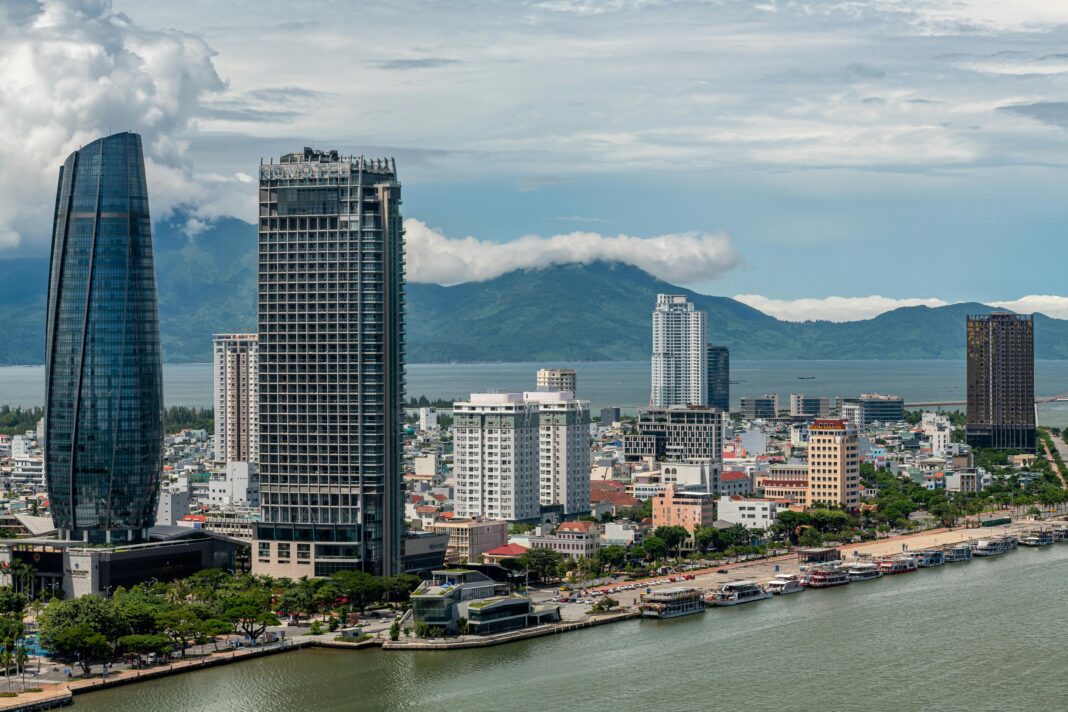In a sweeping move to position itself as the logistical hub of Central Vietnam and beyond, Da Nang is embarking on an ambitious plan to fully integrate all five modes of transportation—road, rail, air, sea, and inland waterways—into its economic development strategy.
According to BaDaNang.com, on February 19, 2025, the Da Nang People’s Committee officially approved Decision No. 484/QD-UBND, greenlighting a proposal to boost regional economic cooperation across the South Central Coast, Central Highlands, and countries along the East-West Economic Corridor 2. The comprehensive infrastructure plan aims to transform Da Nang into a premier multimodal transport and logistics hub, linking Vietnam with Laos, Thailand, Myanmar, and major global markets.
Roads to Prosperity
The plan includes major expressway projects, such as the construction of the Da Nang—Thanh My—Ngoc Hoi—Bo Y expressway, which will strategically connect with the existing Da Nang—Quang Ngai expressway. Upgrades to the La Son—Tuy Loan expressway are also on the table.
Notably, National Highway 14B through Da Nang will be expanded into a six-lane urban artery, while Highway 14G will be upgraded to meet modern standards. Infrastructure enhancements will also focus on boosting cross-border connections, particularly to the Nam Giang international border gate in neighboring Quang Nam Province.
A major urban public transport project is also developing to link Da Nang with Hoi An and Lang Co via either a railway or an equivalent mass transit system.
Rail Revival and Future Connections
On the rail front, plans are underway for both high-speed and conventional national railways to run parallel along the eastern expressway corridor. A new Da Nang – Kon Tum railway is also being proposed, which would eventually connect to the national North-South railway via a new station post-2030.
Aviation and Seaports Take Center Stage
Da Nang International Airport is set for a transformative expansion, aiming to serve 25 million passengers per year by 2030, and 30 million by 2050. The project includes the development of specialized aviation logistics services and upgraded aircraft parking facilities.
Meanwhile, Da Nang Port—already well-equipped with modern technology—will expand its role as a Type IA international gateway port. It will function as a hub for imports, exports, and logistics, and form a powerful port cluster alongside Chan May and Chu Lai Ports. This port network is expected to rival the likes of Saigon and Hai Phong in scale and efficiency.
The Tien Sa port complex will also be repurposed into a dedicated tourist port after 2030, aligning with the broader sea tourism ambitions of the region. The launch of Lien Chieu cargo port will allow for this strategic realignment.
Waterways to the World
Da Nang’s development vision also includes a robust inland and international waterway transport network. Proposed passenger routes will connect Da Nang to iconic destinations like Ha Long Bay, Ho Chi Minh City, Cham Island, Ly Son, and even Con Co Island in Quang Tri. International waterway links to North America, Europe, Asia, and India are also being explored.
Once certain technical criteria are met, the Han River – Vinh Dien River route will be converted to a local waterway under national guidelines.
Expert Endorsements and Regional Collaboration
Transportation experts and logistics professionals have lauded the city’s plan. MSc. Vo Van Toan, Director of Ky Viet Construction Engineering Investment and Consulting JSC, praised the initiative as “reasonable and scientific,” citing Da Nang’s strategic location at the confluence of the East-West and East-West 2 economic corridors.
He emphasized that prioritizing aviation and seaport logistics in a multimodal framework would give Da Nang a competitive edge in the global marketplace. “Establishing a synchronized logistics ecosystem is critical to meeting the production and import-export demands of the region,” he noted.
Mr. Toan also called for a unified approach to developing seaports across the region—including Chan May, Tien Sa, Ky Ha, Dung Quat, and Quy Nhon—by creating interconnected port clusters to boost Vietnam’s maritime economy.
A Regional Leader in the Making
As Da Nang accelerates its infrastructure transformation, the city is poised to emerge not only as a domestic leader but also as a critical logistics gateway for Southeast Asia. By weaving together strategic transport corridors and integrating global supply chains, Da Nang is staking its claim as the logistical heart of Central Vietnam—and potentially, the entire Indo-Pacific region.




